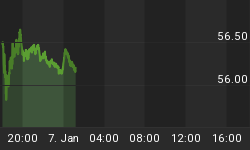According to NADA Used Car Guide, wholesale prices on used vehicles are getting crushed. Let's take a look at the details.
Used Car Prices Since 1995

Used Car Prices by Type of Vehicle

Used Market Update
In a reversal of what typically occurs in February, wholesale prices of used vehicles up to eight years old fell substantially last month, dropping 1.6% compared to January. The drop was counter to the 1% increase expected for the month and marked just the second time in the past 20 years prices fell in February (last years' scant 0.2% being the other instance).
NADA Used Car Guide's seasonally adjusted used vehicle price index fell for the eighth straight month, declining 3.8% from January to 110.1. The drop was by far the worst recorded for any month since November 2008 as the result of a recession-related 5.6% tumble. February's index figure was also 8% below February 2016's 119.4 result and marked the index's lowest level since September 2010.
Incentives Jump by 18.1%
Automakers grew incentive spending once again in February, making it the 23rd month in a row where spending was increased. On average, spending reached $3,594 per unit versus $3,043 per unit in February 2016 according to Autodata.
Among the U.S. Big Three, GM raised incentives by 27.4% in February to an average of $5,125 per unit. Spending at Ford Motor Company rose by 20.9% to $4,012 per unit, while FCA increased incentives by 10.6% to $4,365.
As for Import automakers, Toyota Motor Sales raised incentives by 7.9% in February, reaching an average of $2,267 per unit. American Honda grew incentives by 26.6% to $1,886, while Nissan North America increased spending by 20.1% to $4,080 for the month.
Inventory Falls to 74 Days
Compared to January, days' supply fell by 11 days in February, landing at 74 days for the period. Looking back, February 2016 saw a supply of only 69 days according to Wards Auto.
GM's supply reached 91 days over the month, due largely to Buick's industry high 167-day inventory. Ford Motor Company's supply fell to 78 days, while FCA's inventory dropped to 83 days.
Toyota Motor Sales' supply decreased to a lean 67 days, matching Nissan's figure for 67 days for the month. Meanwhile, inventory for Honda fell to 74 days. Subaru's 38 days of supply remained lowest in the industry.
As for luxury automakers, BMW's inventory fell to 46 days, while Daimler inventory remained unchanged versus January at 44 days' supply. Cadillac's inventory of 107 days was the highest in the luxury sector, while Tesla's two days was the lowest.
Fundamentally Speaking
NADA partially blames late tax refunds for some of the declines in March.
While it's true the IRS slowed claims for the Earned Income Tax Credit (EITC) and the Additional Child Tax Credit (ACTC) to combat fraud, late refunds in 2017 cannot possibly explain an eight-month trend.
Yet, based on tax refunds, NADA expects a rebound in used car prices in March.
With massive incentives on new vehicles, I say, let's see. Regardless, it's pretty clear that car sales are slowing, and it takes bigger and bigger incentives to push them out the door.
Recall that on March 7, GDPNow 1st Quarter Forecast Plunges to 1.3% Following Vehicle Sales and Factory Orders Reports.
Also recall that the FRBNY Nowcast did not take auto sales into consideration.
On March 15, I reported GDPNow Forecast Dips to 0.9%: Divergence with Nowcast Hits 2.3 Percentage Points – Why?
Is this all related to slow tax refunds? We will soon find out.















